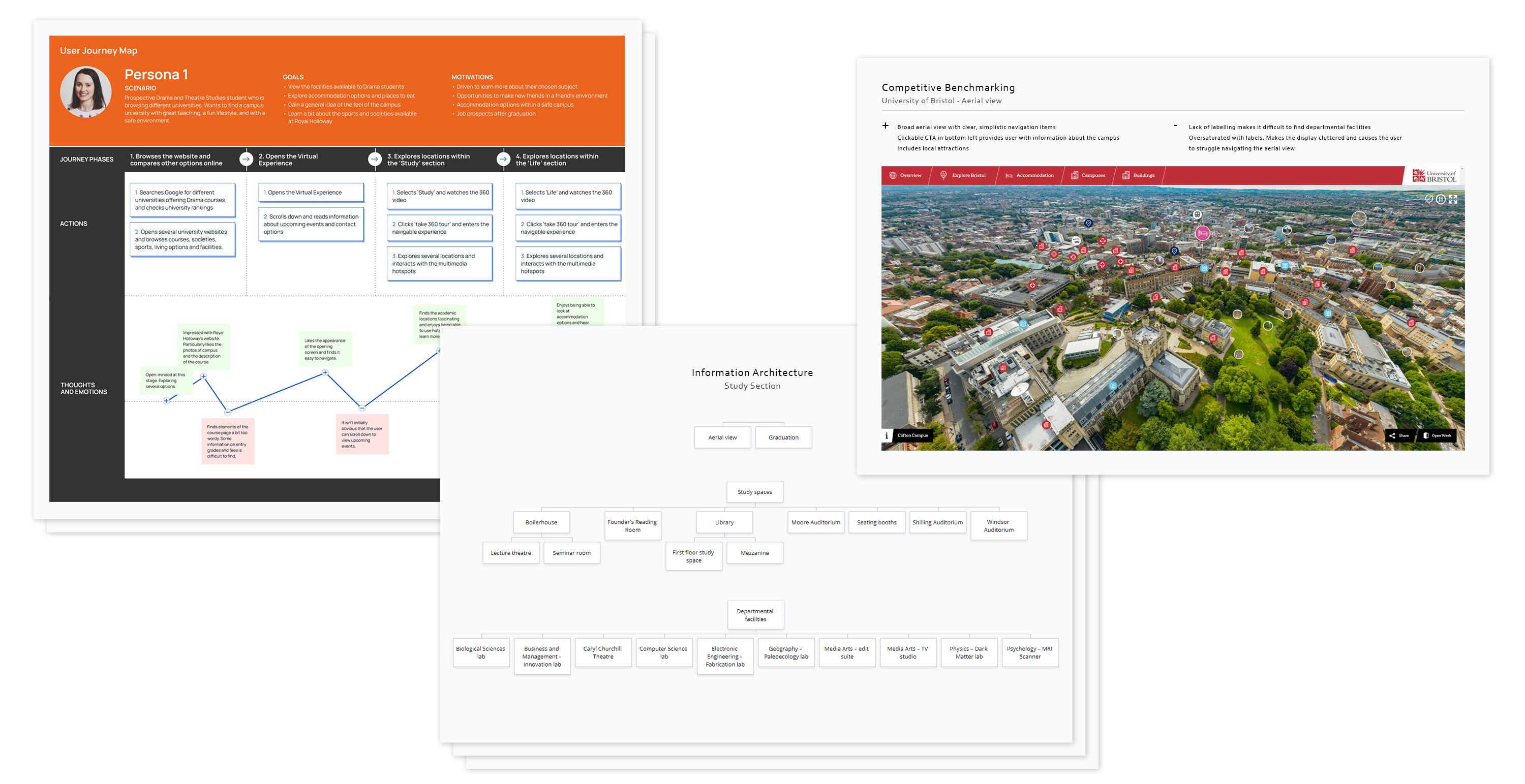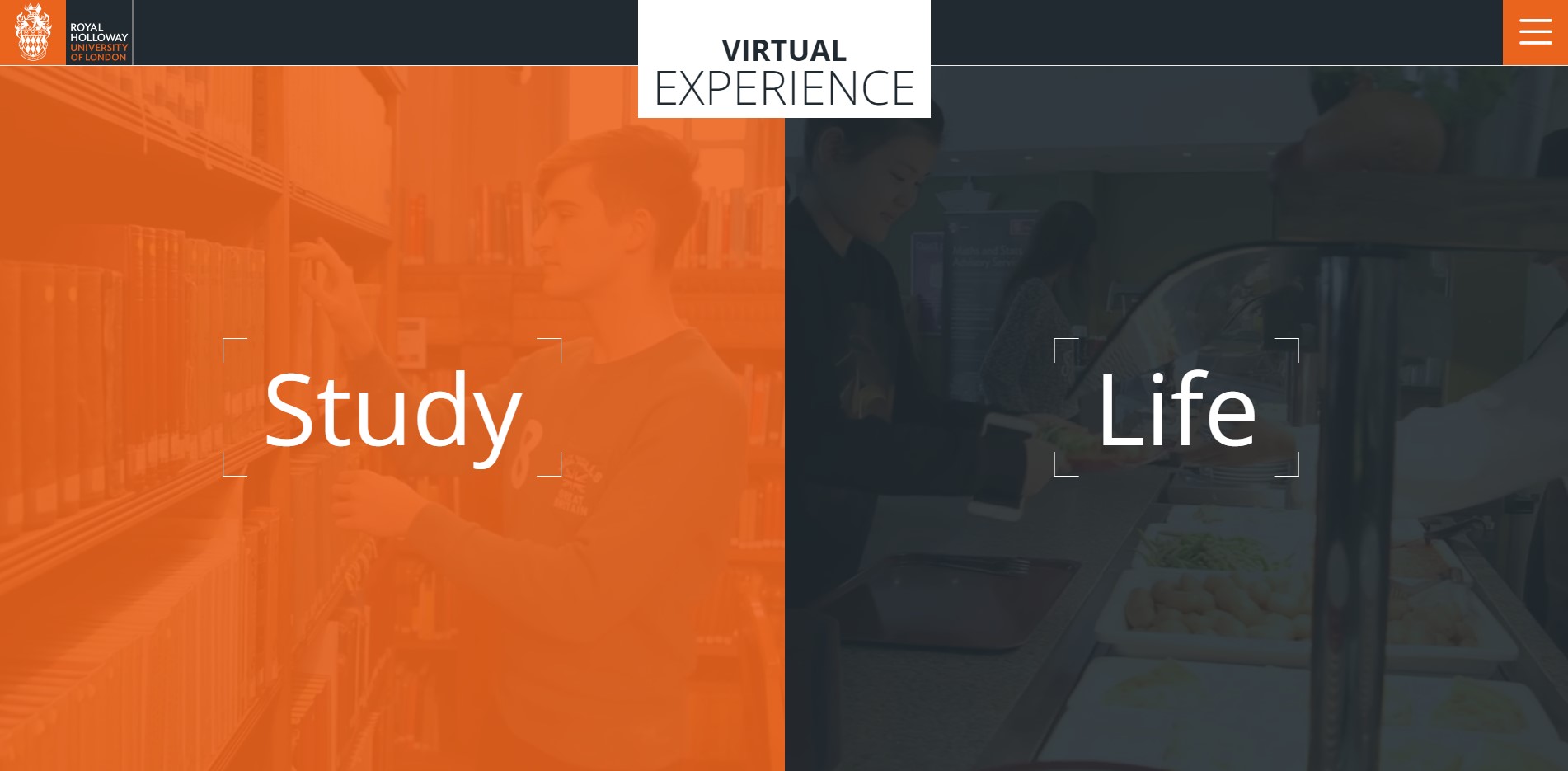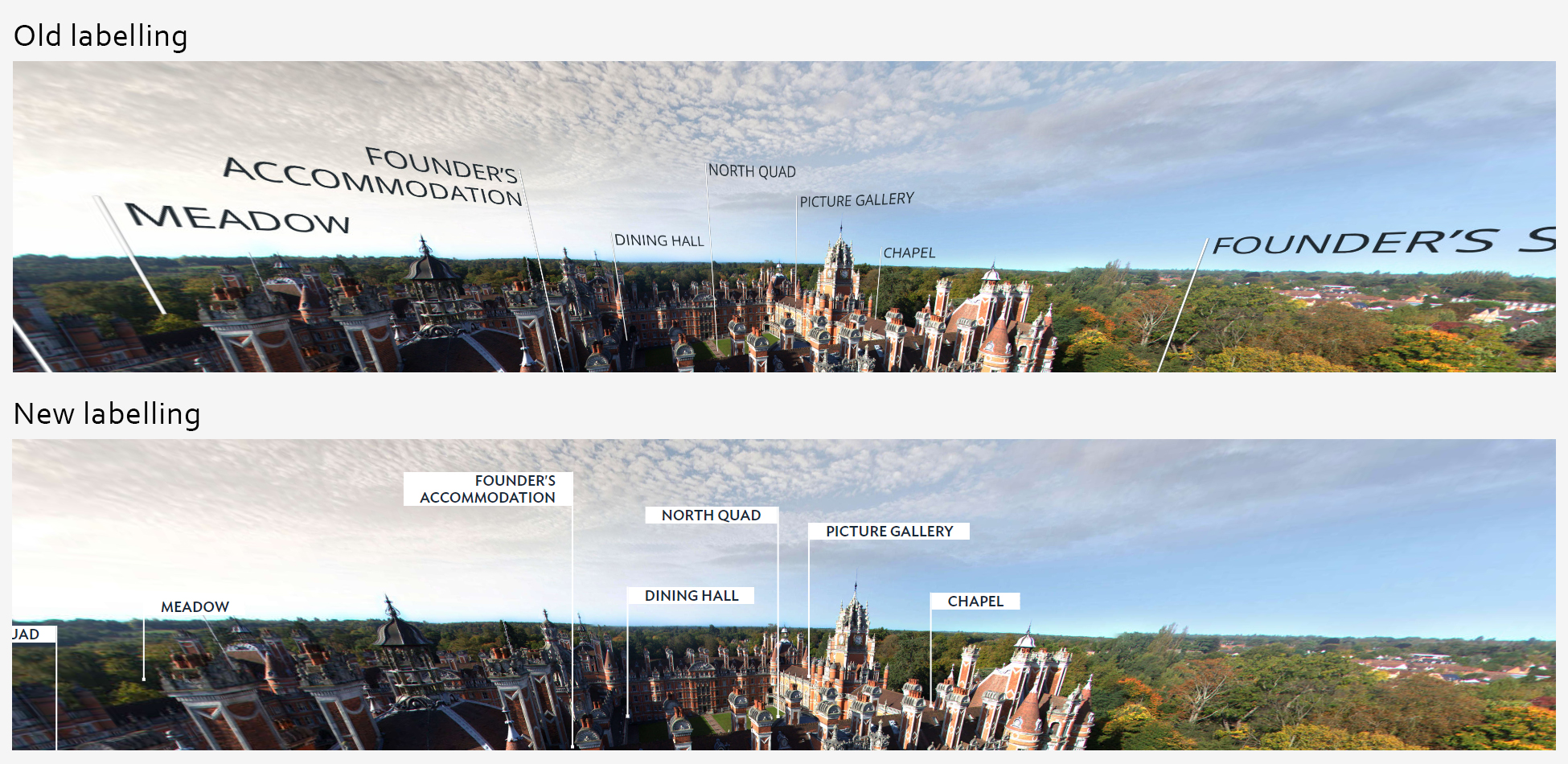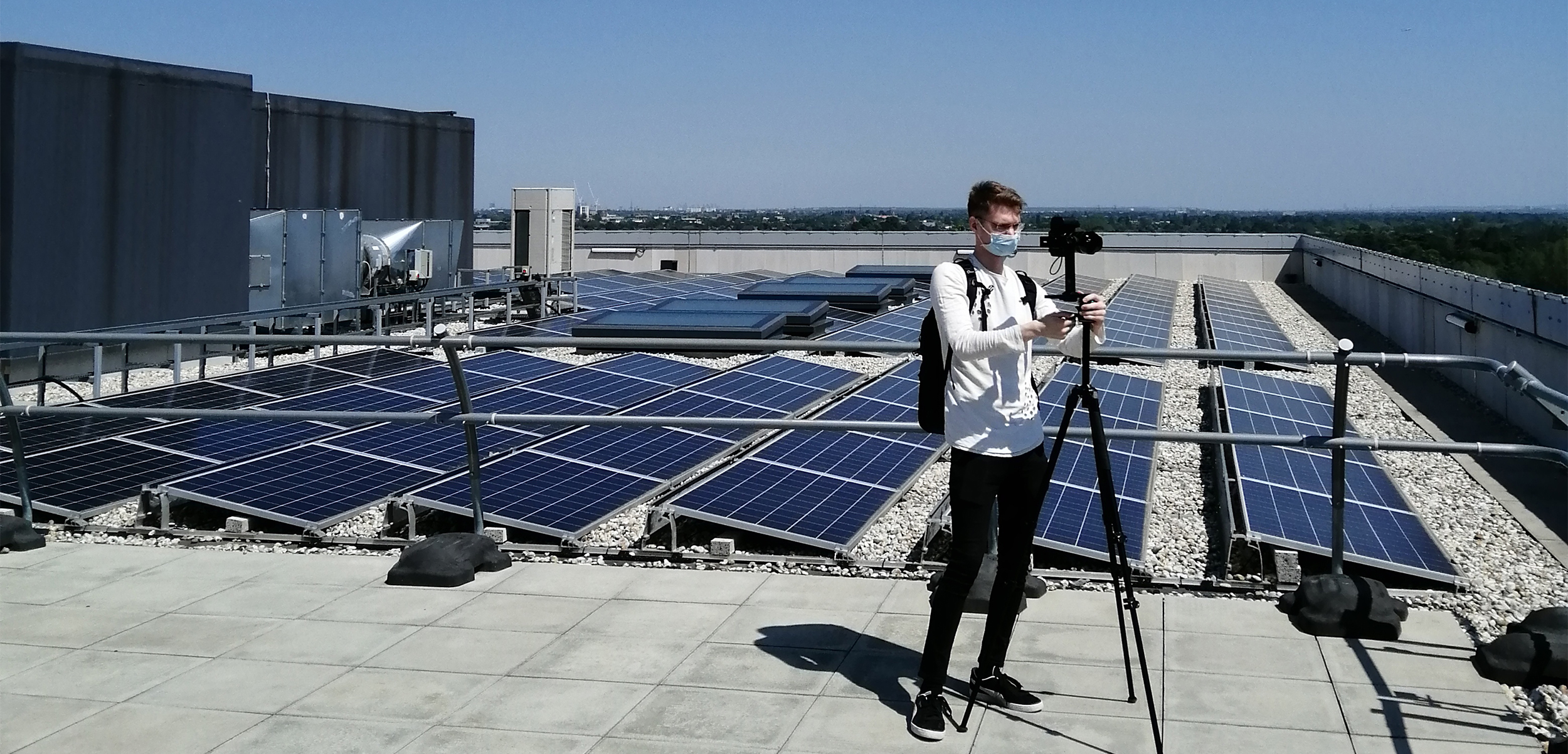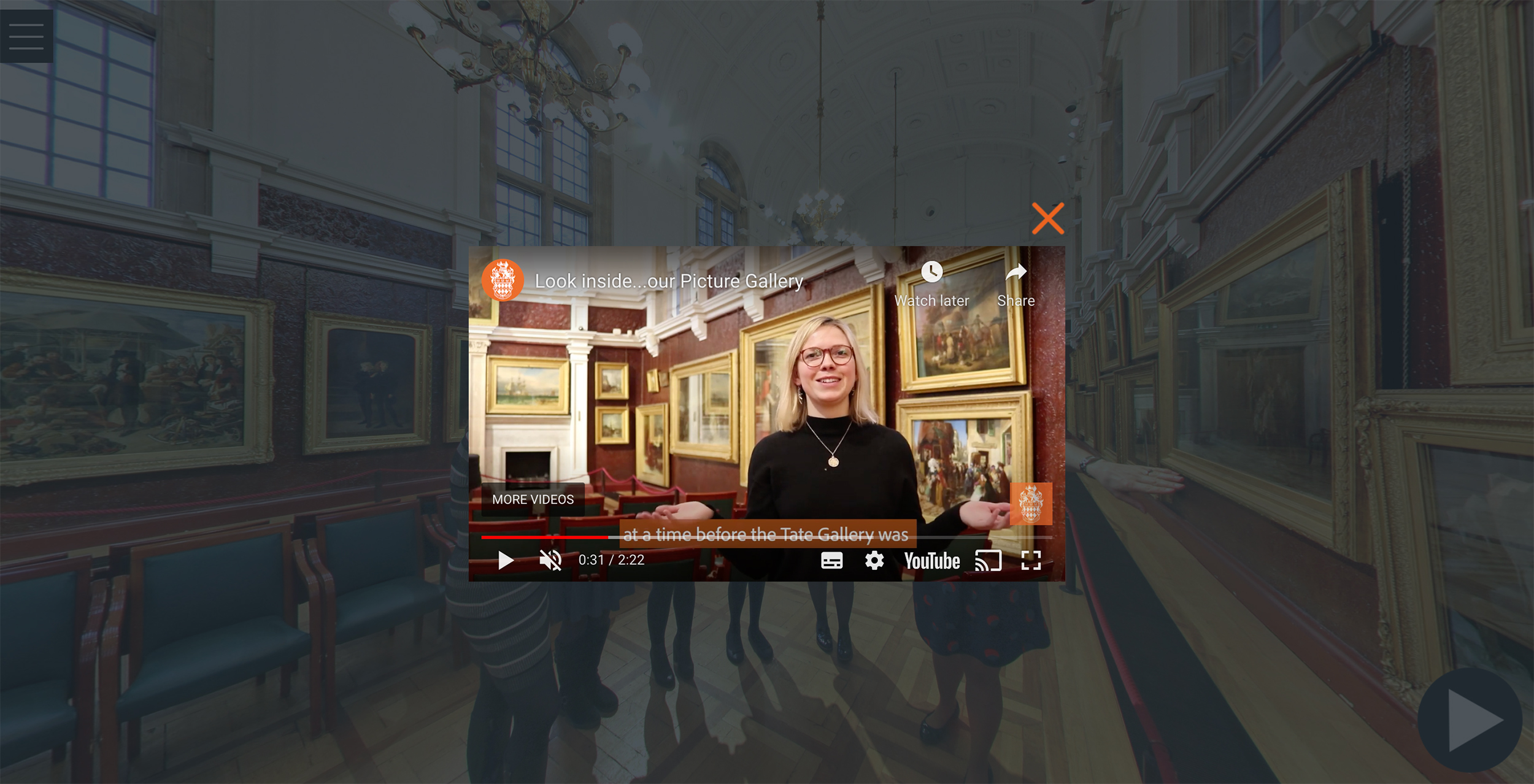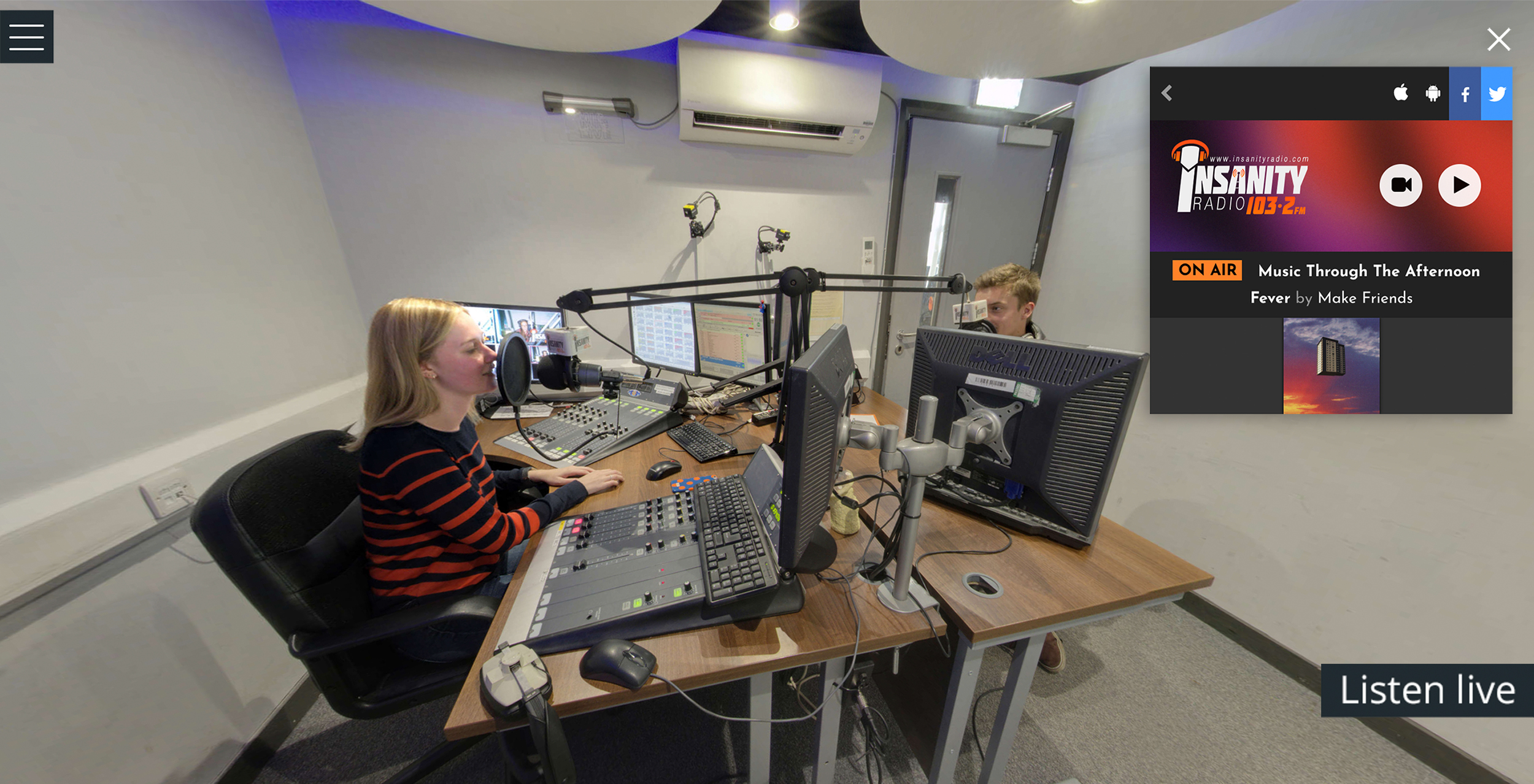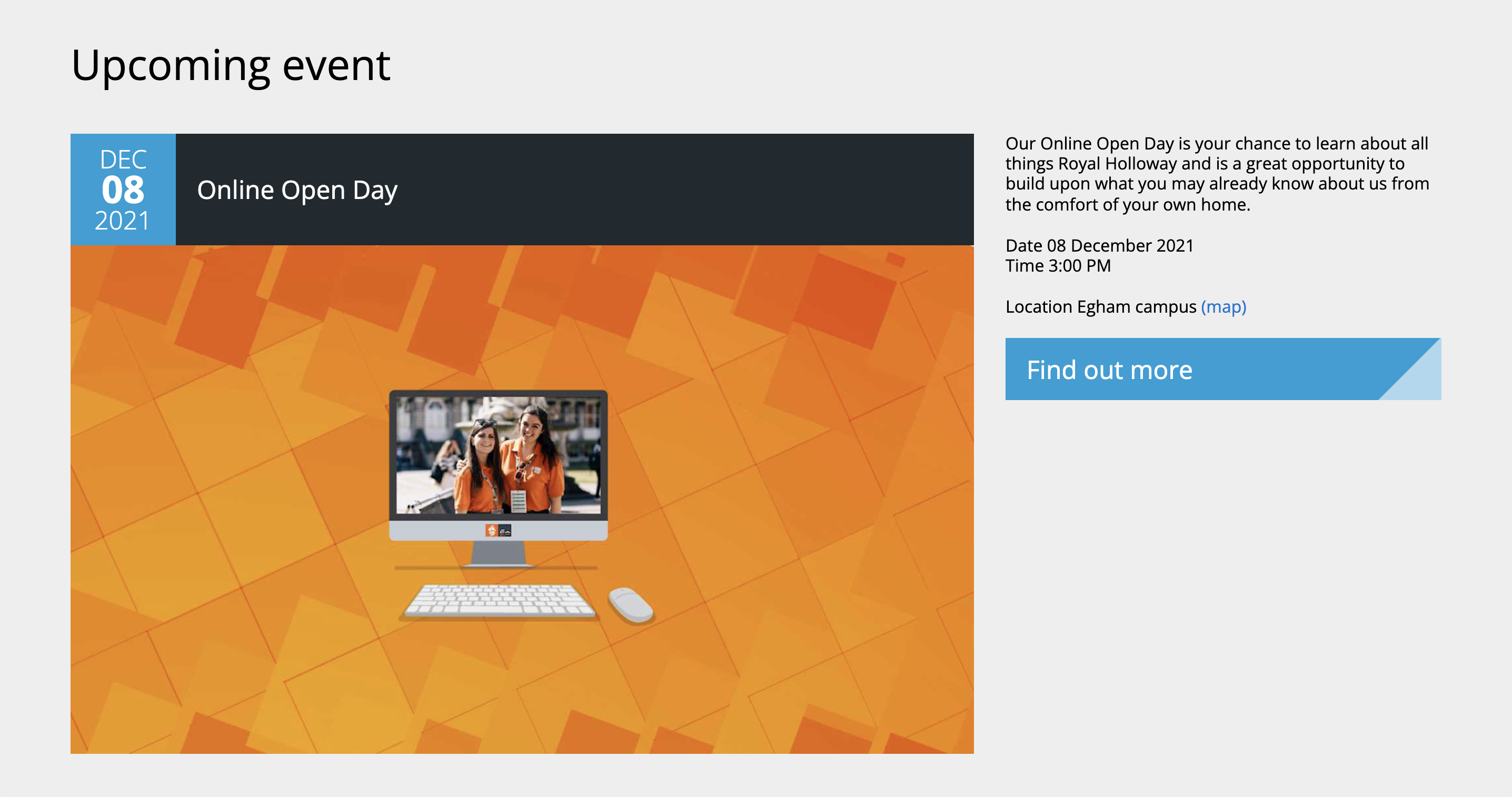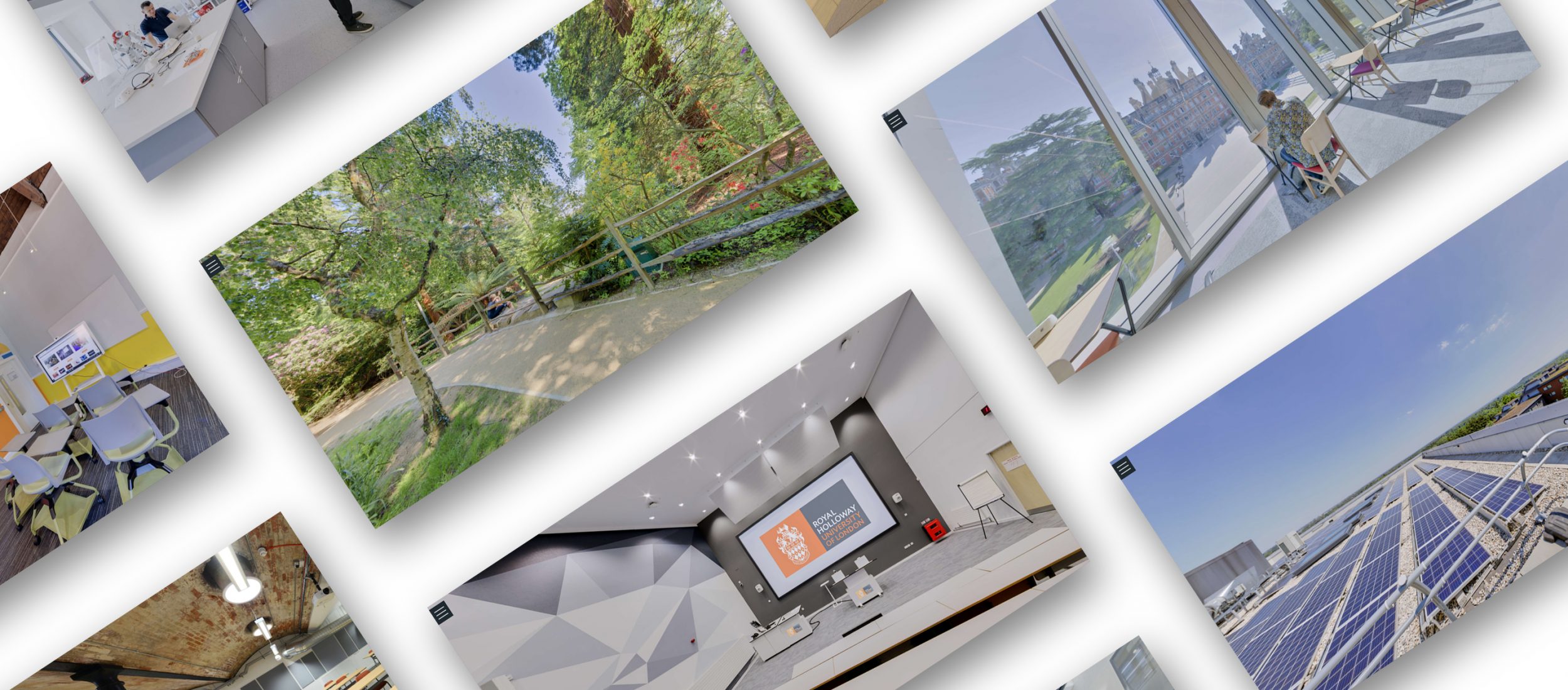
Virtual Experience
About
As part of a wider project to encourage more students to study at Royal Holloway, the team decided to invest in developing an improved 360° Virtual Experience.
My Role
As the sole Designer and Project Manager, I was tasked with planning the development of the Virtual Experience and working with the VR agency to capture new content. My role involved making improvements to existing content, adding new locations & hotspots and introducing a more accessible, intuitive design.
Company
Royal Holloway, University of London
Team
Digital team working with Virtual Reality agency, Circus 360.
Duration
July – Dec 2021 (6 months)
Tools used
Adobe XD, Asana, Photoshop, Illustrator, Zoom
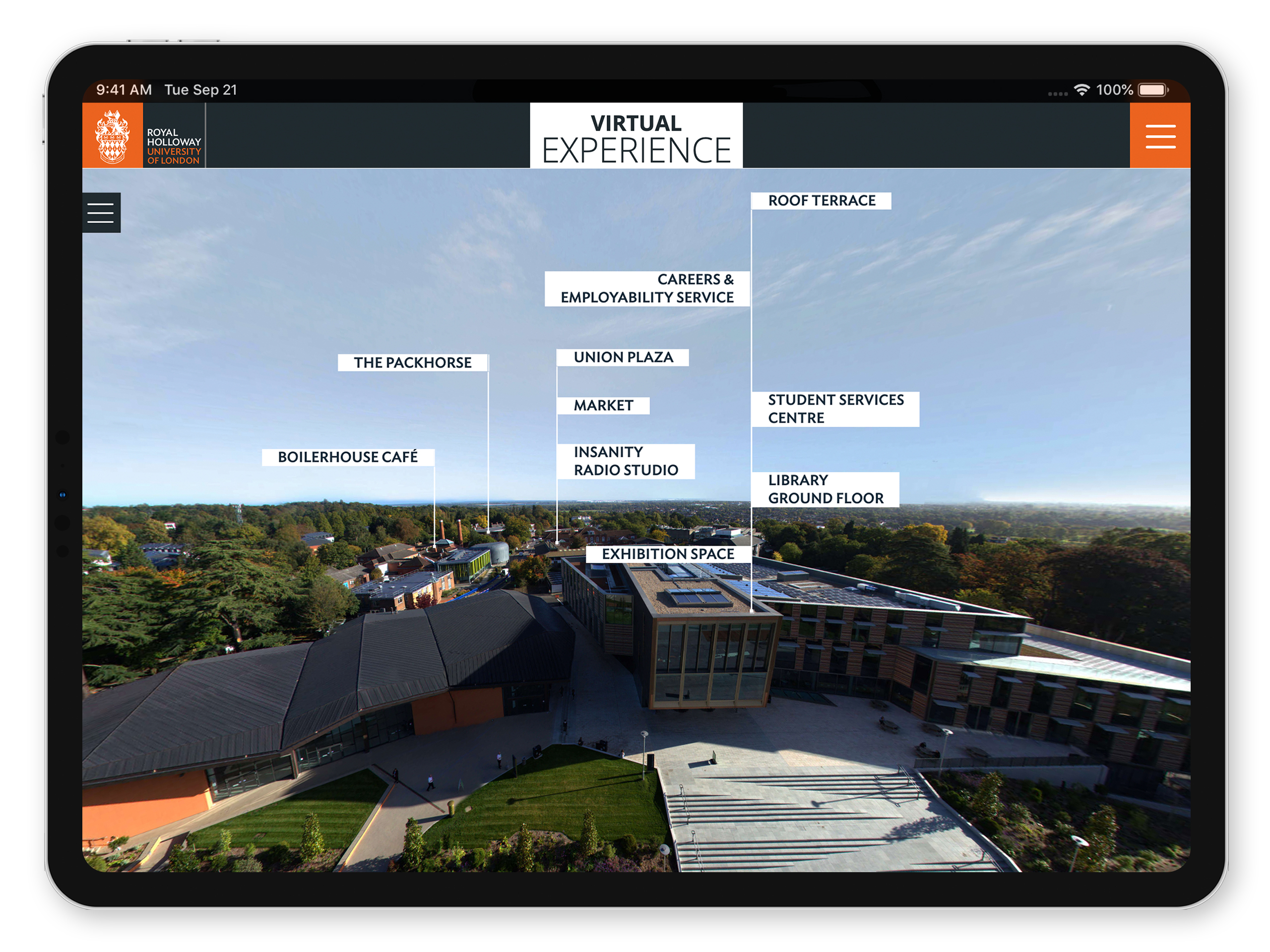
Project Summary
Brief
“The new Virtual Experience needs to provide prospective students with an enhanced tour of the campus, giving them key information and additional insight into living and studying at Royal Holloway. It needs to be a tool for marketing the university to potential applicants by conveying the ‘feel’ of our campus.”
Approach
With a tight deadline in place, I decided to conduct the project using the Lean UX methodology. This agile approach allowed me to efficiently iterate on design work, testing and refining the MVP based on the user’s needs.
Outcome
The result of the project was an improved Virtual Experience with an accessible design and several new locations and hotspots. With time, we expect to see an increase in session duration and, ultimately, a rise in Open Day registrations and student applications.
Methods
Techniques used for research, analysis, and design
Interviews
Personas
Competitor Research
User Journeys
Information Architecture
Prototype Testing
Prototype Testing
Student mindsets
Through synthesising our findings and reviewing existing research data, I was able to define the most prevalent user mindsets.
Lifestyle Focused
Prospective students tend to be primarily focused on lifestyle features, e.g. the campus experience, societies on offer, accommodation options, and the university’s location. Concerns with academic research quality and reputation are often secondary to these considerations.
Ethics and Character
More so than ever, students are interested in the character and ethics of the university as an organisation. They want to see that the university is inclusive, transparent, and forward thinking.
Driven by Career Prospects
Prospective students, and especially their parents and supporters, can often view university study through the lens of future career prospects. As students explore their options online, they need to be convinced that Royal Holloway can offer courses that lead to exciting and fulfilling jobs.
1.0 Designing an Improved User Interface
Using an iterative design process, I created a new user interface for the Virtual Experience. Initial sketches were drafted and developed into medium-fidelity prototypes using Adobe XD. These designs were then built in code by the agency.
The new Virtual Experience was split into two paths – Study and Life. Separating the microsite into two distinct sections helped to provide a clear structure. In comparison, the previous virtual tour had a crowded user interface containing all of the locations in a single aerial view.
With a view to improving legibility and accessibility, I worked on re-designing the location labels. The new labels include a white background to enhance the contrast of the text. They were designed to retain their original proportions, rather than stretching as the user navigates around the 360° experience.
2.0 Capturing and Embedding New Locations
To decide on the new locations for inclusion, I hosted a workshop with a group of Marketing colleagues. We discussed the student priorities identified during the research phase and decided on 18 locations that aligned with user needs.
Working with an external media agency, I was then responsible for planning and overseeing the photography of each new location.
This involved:
- Writing a project plan and briefing the photography agency during initial meetings
- Planning the schedule for the shoot day
- Liaising with staff across the university to prepare each location ahead of the photoshoot
- Preparing and distributing GDPR consent forms
- Drafting a risk assessment
- Directing the photographer during the shoot day
Once each new location had been photographed and edited, I created sitemaps for the new Virtual Experience and briefed the development team on where to embed each new location within the overarching structure.
3.0 Introducing Engaging Hotspots
Using the student mindsets uncovered during the research phase, I worked on designing several engaging hotspots for users to interact with. These included videos, informational popups, and a ‘listen live’ radio embed.
To validate design choices, the hotspots were prototyped using Adobe XD and tested with student ambassadors. Results showed that users were finding the hotspots easy to use and feedback during short interviews was also positive.
4.0 Adding Event Content
Finally, a new ‘Upcoming event’ section was added. This was introduced to improve the overall user flow of the microsite and to enable students to easily locate information on attending an open day or taster event, both of which are crucial parts of Royal Holloway’s student recruitment strategy.
Learnings
Quality-Check Early
Due to time constraints assigned to the project and complications scheduling the photoshoot (delayed due to poor weather conditions), the process of proof-reading the navigation labels was carried out in the final few weeks of the project timeline. This resulted in some small errors appearing in the final drafts which the media agency then charged us an additional fee to amend.
In future, I would ask multiple team members to quality-check and test the product earlier and on multiple occasions throughout the overall timeline.
Results
Lower 'struggle score' and less 'rage clicking'
Improving the UI with clearer, more accessible labels led to a reduction in ‘rage clicks’ shown on Hotjar. Our session recordings indicated that users were identifying clickable elements quicker and, overall, students were navigating the tour with less difficulty.
Increased event sign up
As a result of including the ‘upcoming event’ section within the Virtual Experience, we saw a 47% uplift in applicant event sign-up during sessions where the user had visited the Virtual Experience.
Longer session duration on the Virtual Experience
The average time on page increased from 3:23 mins to 4:28 mins, with users viewing with more locations during the average session. This is likely to contribute positively to reputation and provide prospective students with a fuller understanding of what Royal Holloway has to offer.
Testimonial
“
Stephen’s work leading the Virtual Experience update project was exemplary, showcasing a wide range of skills and knowledge, as well as pushing him into some newer areas of development.
I very much trust Stephen with complex tasks and know he will see each project through to completion.
“Stephen’s work leading the Virtual Experience update project was exemplary, showcasing a wide range of skills and knowledge, as well as pushing him into some newer areas of development.
I very much trust Stephen with complex tasks and know he will see each project through to completion.”
James Dodd, Head of Digital
”
